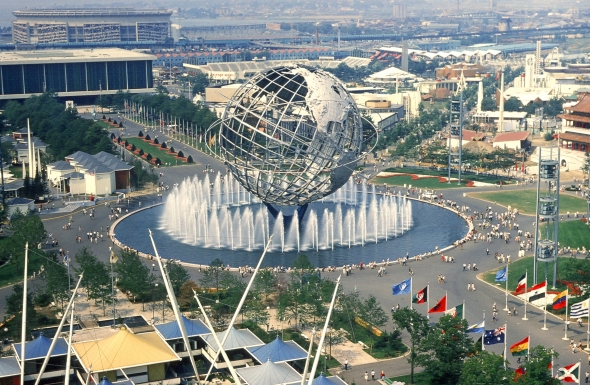EPCOT is one of a kind. For Disney World fans, there’s no park as marked by nostalgia, change, promise, and loss. With hopes to “instill a new sense of belief and pride in man’s ability to shape a world that offers hope to people everywhere,” EPCOT today is a park defined by reinvention. And yet, among its staggering collection of closed classics, there’s one particular attraction that stands out… Alight with the musical creativity, this ride inspired a generation with a simple reminder:
“One little spark of inspiration is at the heart of all creation! Right at the start of everything that’s new, one still spark lights up for you!”
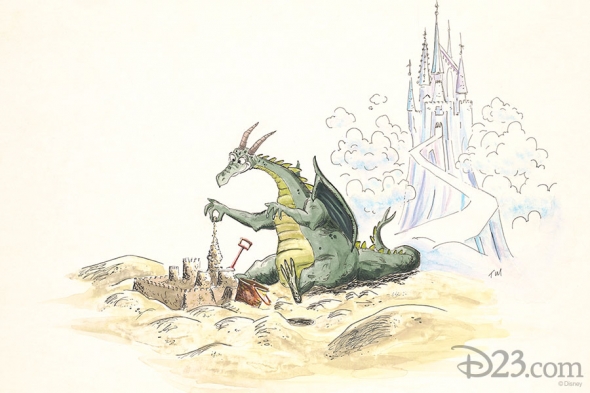
Journey into Imagination is long gone. That means that a generation of Disney Parks fans never had the chance to take flight with Dreamfinder and Figment, or to sail through realms of art and science on a quest for “sparks.” But that’s where our library of Lost Legends comes in… Today, we’ll soar through the clouds as we preserve this timeless experience for good, crystalizing the creation of this spectacular closed classic, our memories (and yours!) of the experience on board, and its unfortunate history since…
Ready to set sail for the Dreamport?
And before we head off, remember that you can unlock rare concept art and audio streams in this story, access over 100 Extra Features, and recieve an annual Membership card and postcard art set in the mail by supporting this clickbait-free, in-depth, ad-free theme park storytelling site for as little as $2 / month! Become a Park Lore Member to join the story! Until then, let’s start at the beginning…
World Innovation
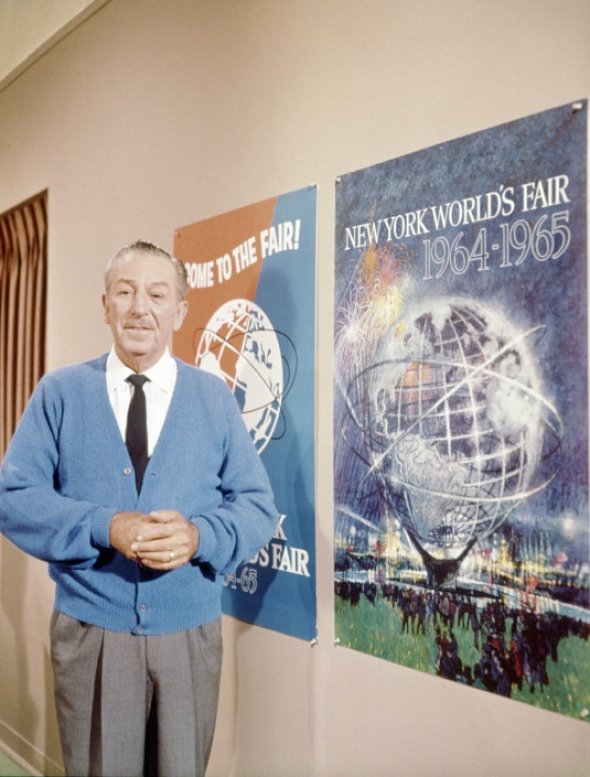
It’s well known among fans of Disney history that Walt Disney was an innovator. Never satisfied with standing still, the opening of Disneyland in 1955 only inspired Walt to improve, expand, and reimagine. In fact, the most major milestone in the development of Disney Parks in the 1960s didn’t happen in Anaheim or even Orlando, but at the 1964-65 New York World’s Fair in Queens.
For literally centuries, World’s Fairs have been iconic international expos inviting governments (and later, corporations) from around the world to come together in a chosen host country to celebrate their cultures, cuisines, innovations, and ideas. 1889’s Exposition Universelle, for example, was hosted in Paris, with the “temporary” Eiffel Tower constructed as its icon; see also, San Francisco’s 1915 hosting with the Palace of the Fine Arts, or 1962’s event in Seattle, comissioning the central Space Needle.
The New York World’s Fair is perhaps one of the most well-known in history. By its 1964 opening, these international expos had evolved into their definitive form: massive, monumental pavilions constructed and filled by states, countries, and corporations eager to share their message and brand with visitors from around the globe. And in the spirit of these showcases of optimism, collaboration, and futurism, each corporation wanted something magnficent for their pavilion.
Take the UNICEF (United Nations Children’s Fund) pavilion, sponsored by Pepsi-Cola. As the story goes, Pepsi’s Board of Directors debated for months about what kind of attraction they should develop to both bolster Pepsi’s brand as well as to complement the unifying message of UNICEF. As luck would have it, board member Joan Crawford (widow of Pepsi’s former president) was fed up with the debate and asked her personal friend Walt Disney if he’d get involved and design an attraction for the pavilion.
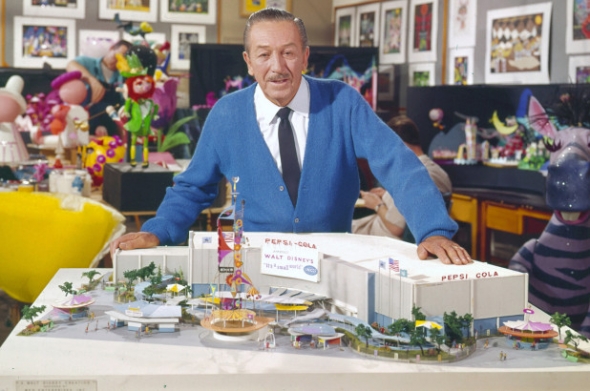
The result was “it’s a small world,” an Imagineering masterpiece made of all the right ingredients: a Sherman Brothers song, the incredible artistic vision of Imagineer Mary Blair, and an innovative, high-capacity new ride system! And so it went for attractions developed for the State of Illinois, Ford Motor Company, and General Electric, each funding the testing, development, and prototyping of new technologies that, at the close of the Fair, were relocated along with “small world” back to Disneyland (as Great Moments with Mr. Lincoln and the Lost Legends: The Peoplemover and Carousel of Progress, respectively).
Remember the lessons learned through Disney’s sponsored participation and innovation in the 1964-65 New York World’s Fair… it’ll be important.
“The blessing of size”
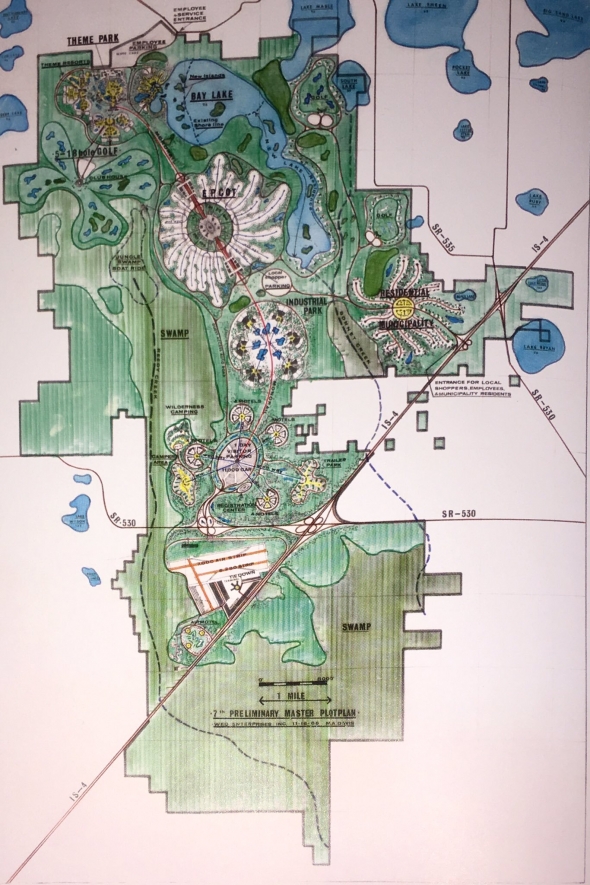
Disney’s innovations at the World’s Fair propelled Disneyland forward. The groundbreaking advances made in Audio-Animatronics and ride systems in the era aren’t just responsible for the World’s Fair attractions themselves, but for Pirates of the Caribbean, Haunted Mansion, and Walt’s New Tomorrowland.
But it’s also true that, hemmed in by the urban sprawl that developed around Disneyland in the ’50s and ’60s, Walt set his sights on acquiring a much larger parcel of land in Central Florida, gifting his designers with “the blessing of size” in creating something new. But the “Florida Project” wasn’t about building a new Disneyland. In fact, Walt was unapologetically determined to change modern living as we know it.
In 1966, Walt revealed his plans for the “Florida Project” and its centerpiece: E.P.C.O.T. – the Experimental Prototype Community of Tomorrow. Walt planned for EPCOT to be a real, living, functioning showcase of future living; an urban and residential town that would apply the transportation technologies he’d merely prototyped at Disneyland – the Peoplemover and Monorail. In fact, it’s said that, as Walt lay in his hospital bed just before his death in 1966, he was still looking up, using the squared ceiling tiles as a grid to explain the layout of his EPCOT city.
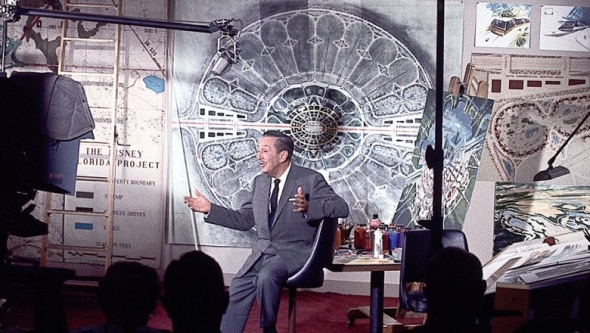
Walt didn’t live to see the “Florida Project” come to life. Without his visionary guidance and zeal, the new leadership at Walt Disney Productions decided they couldn’t be in the business of building a city from scratch. Instead, the centerpiece of Walt Disney World’s 1971 opening was, of course, Magic Kingdom – an evolution of the original Disneyland.
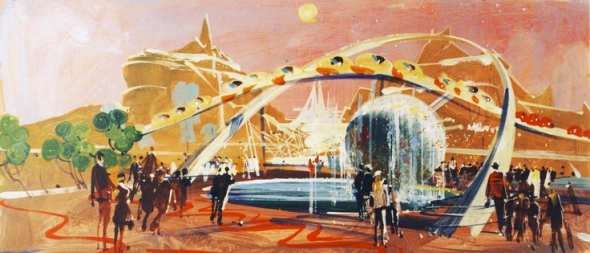
However, the core concepts of Walt’s EPCOT – among them, futurism, Americana, and the power of industry – did inform Walt Disney World. And when it came time to open a second theme park on the property, then-CEO Card Walker returned to the principles of EPCOT in the design of the new gate; one that would do away with all that people expected of Disney (like princess, pirates, castles, and cartoons).
In a radical shift from the Magic Kingdoms that preceeded it, EPCOT Center would be grounded in celebrations of industry, innovation, culture, and (most startling of all) reality – a permanent World’s Fair showcasing human achievements with a lofty mission to shape the world.
Not like the others
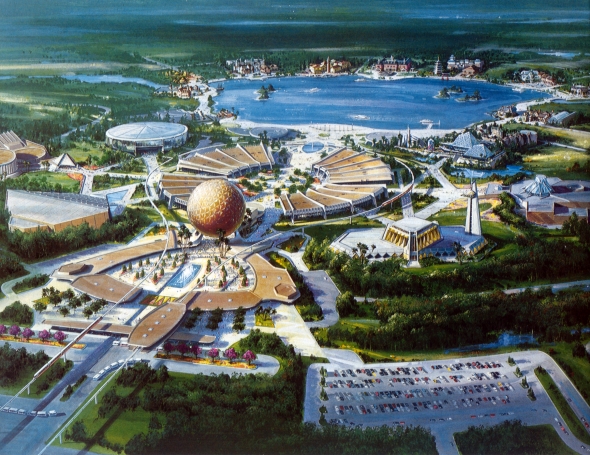
EPCOT Center would open with two massive “realms” pressed together like a figure eight – a cultural World Showcase of corporate-sponsored pavilions of international countries, and Future World, comprised of monumental pavilions, each dedicated to areas of science and industry.
But it was more than just the park’s “pavilion” structure that served as a World’s Fair connection; it was also its finances. EPCOT Center relied on corporate sponsors to adopt the park’s pavilions. At least at first, it must’ve seemed like a win-win scenario. In exchange for their ongoing financial support, corporations would play a role in shaping the messaging of Disney-designed attractions, earning the “good will” of having their brand name presented alongside Walt Disney World. And since those corporations wouldn’t want their brands presented alongside outdated information, they’d be inherently motivated to supply the pavilion’s with their cutting edge research and most forward-thinking products.
At Future World’s height, it contained eight pavilions (each with its own related corporate sponsor!) dedicated to communication (Spaceship Earth), ocean exploration (The Living Seas), agriculture (The Land), transportation (World of Motion), health (Wonders of Life), energy resources (Universe of Energy), innovation (Communicore), and a capstone pavilion bringing them all together to dream of humanity’s future (Horizons).
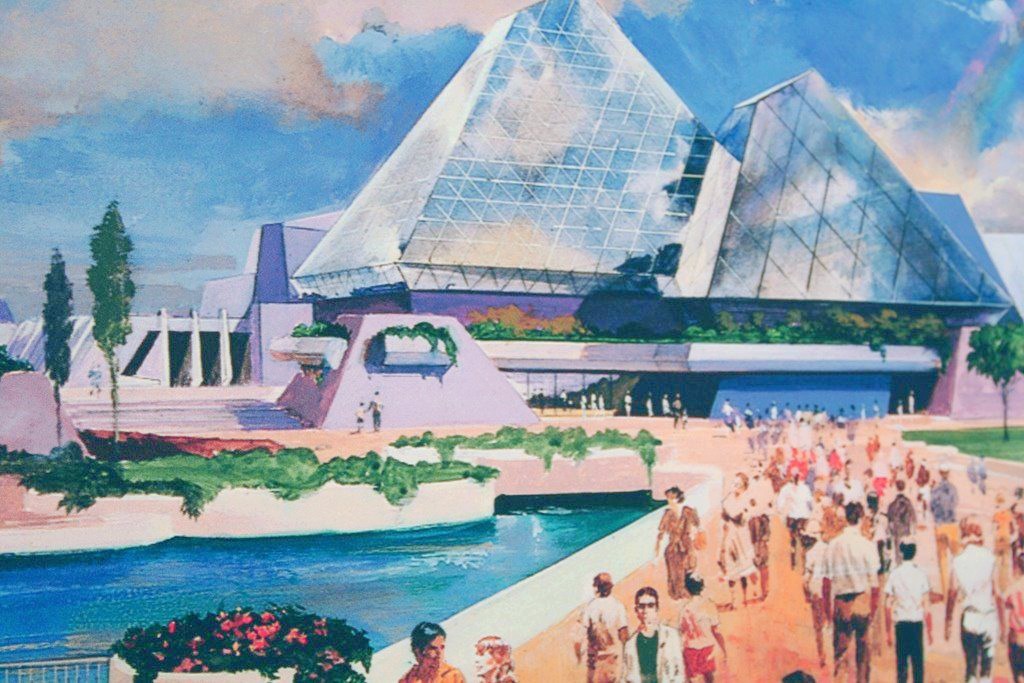
But if Horizons is where our path forward leads, then Imagination is where it begins. Spectacularly, Future World’s Imagination pavilion was identified by its two interlaced glass pyramids (constructed seven years before I. M. Pei’s famed Pyramide du Louvre in Paris, by the way). This shimmering Imagination pavilion looked quite unlike the colder, concrete structures that defined the monumental Future World… Waterfalls, fountains, glowing towers, and gardens… This outlier was indeed something special; warmer; gentler.
And think about it: while the concept of “imagination” hardly fits with the “harder” industries and technologies of the rest of EPCOT, its inclusion is genius! Without it, there would be no advances in communication for Spaceship Earth to showcase; no emerging technology in Communicore; no culinary wonders in The Land… Imagination is the root of science, industry, and civilization; the first ingredient in creating “the future.”
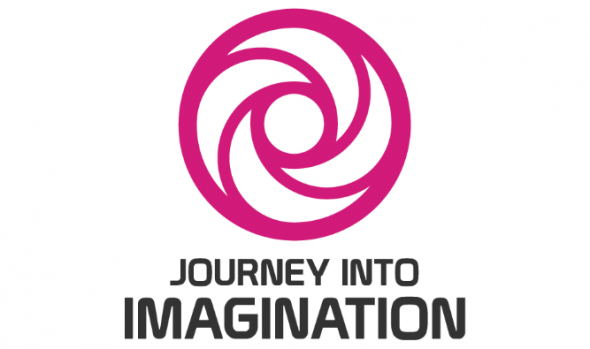
While the concept and the building were indeed novel, it’s what – and who – they found inside the two glass pyramids that Disney Fans recall so fondly. How did Disney designers decide on the iconic Dreamfinder and Figment? On the next page, we’ll see how Journey into Imagination pavilion came to be…



